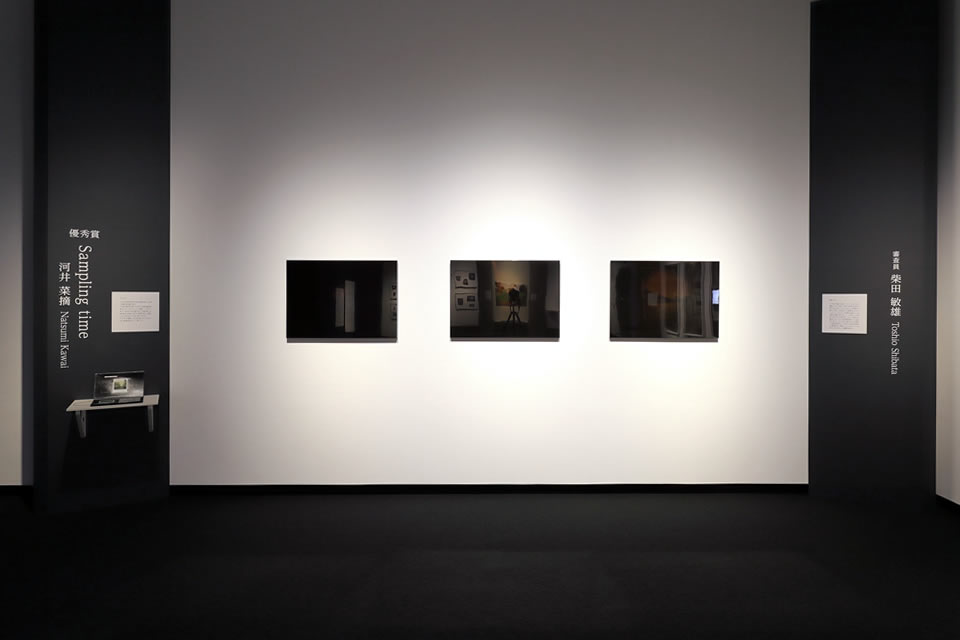PRESENTATION
I created my works first by covering lacquer (a traditional Japanese coating material) panels with a photosensitive emulsion. The panel was then put into a pinhole camera for exposure to reproduce an image directly on its surface. As such, the panel captured the sunlight of ten years ago – on the day of the 2006 summer solstice. At the time, I was a student majoring in urushi lacquering at the Kyoto City University of Arts.
The Japanese character “ ” (photograph) literally signifies “something that faithfully reproduces reality.” Judging from this definition, I came to realize that what I had photographed before was merely the secondary information of light. In order to obtain a black-and-white picture, the image on the lacquer panel must be converted into a positive image while the image itself can be manipulated through different techniques including adjusting the way I expose the panel to light.
” (photograph) literally signifies “something that faithfully reproduces reality.” Judging from this definition, I came to realize that what I had photographed before was merely the secondary information of light. In order to obtain a black-and-white picture, the image on the lacquer panel must be converted into a positive image while the image itself can be manipulated through different techniques including adjusting the way I expose the panel to light.
I made up my mind to make an attempt to leave traces of light on my works. I applied a photosensitive emulsion onto lacquer panels and photographed each of them with a pinhole camera. For this experiment, I used black lacquer to coat the panel. To my surprise, a positive image, instead of a negative image, emerged on the panel surface. With this discovery, I found black lacquer well worthy of use. Above all, I was convinced that I would be able to form images directly from light. “That’s exactly the ‘photograph’ I’ve long sought,” I thought.
The lacquer’s color is darkest when a coat freshly applied. The lacquer turns brown then a transparent gold as time passes and it is exposed to light.
For the three photos I created for this contest, I varied exposure times. My underlying idea was that differences in exposure times would allow “visible forms of time” to vary accordingly. I collectively titled my works “Sampling time” due to the concept of illustrating the passage of time by recording the sunlight of ten years ago and relating it to specimens taken in the following ten years.
For me, photographs formed by the work of light seem to represent moments of time that will never return. Not by way of metaphor, I really feel these works are the specimens that encapsulate light and time.


Selector’s Comment
Toshio Shibata
Whenever I see any two-dimensional work of art, what catches my attention most is its “matiere” (texture). While some contemporary works use a monitor as a medium to show it, if we regard works of art as “physical objects,” I think matiere should be one of the key points in discussing their artistic quality. When photographic works are shown, they are usually panel-framed to prevent the picture from getting discolored, blurred or suffering some other loss to the image. In the case of Ms. your works, however, the images become clearer and clearer with the passage of time. I found this approach, which is contrary to the normally accepted concept, fascinating.
I am originally from the oil painting genre. As such, intuition told me that you took that approach because of some special intentions unlike ordinary photographers. This is why I selected her as an Excellence Award winner.